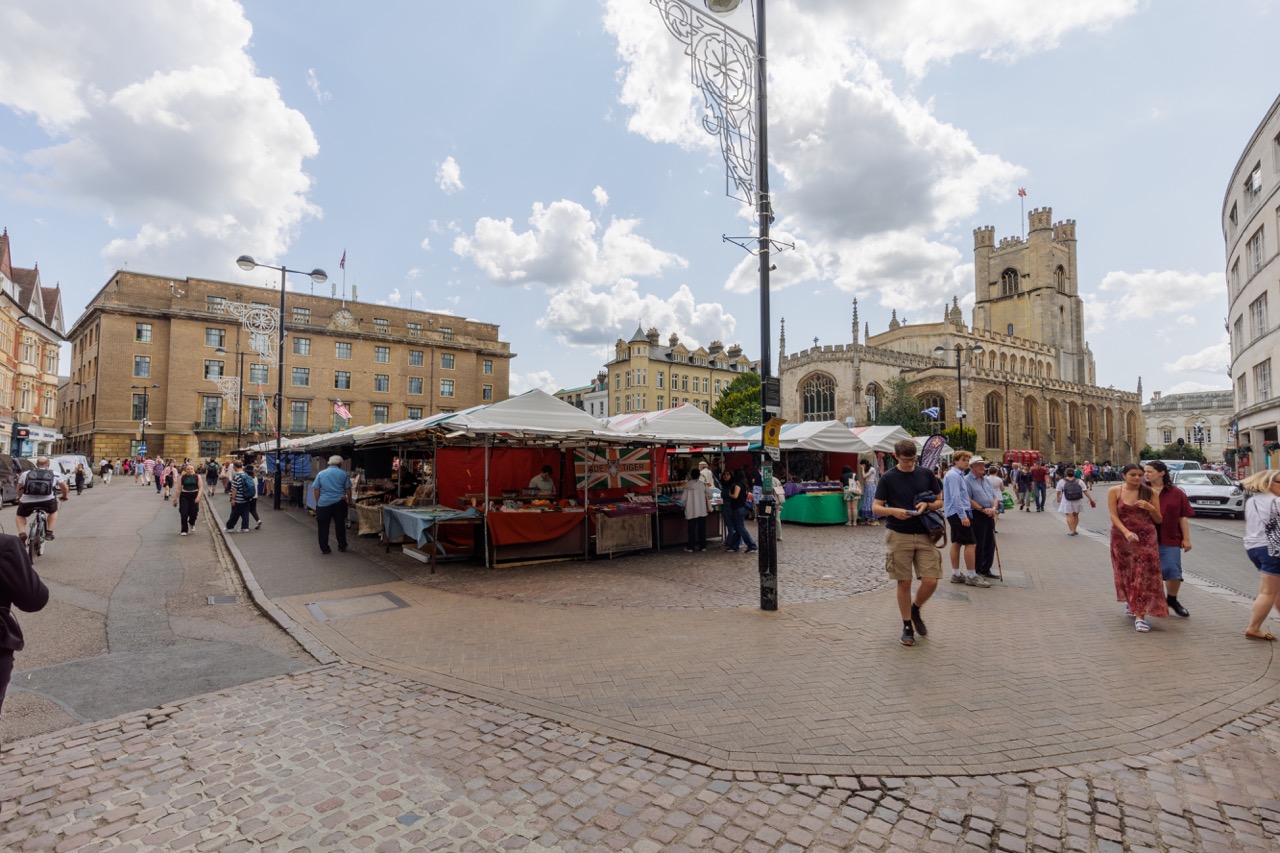Author: Professor Flora Samuel
When I applied for the role as ‘The Professor of Architecture (1970)’ here at Cambridge, I stated what seems very obvious to me which is that Cambridge, the most unequal city in Britain, needs an ‘urban room’ to understand how best to connect the diverse communities of this extraordinary city and to share its advantages with people in its agricultural hinterland of Greater Cambridgeshire. I was therefore very delighted, on arrival in my new post, to discover that plans have been afoot to create an urban room in Cambridge for many years led by the Cambridge Association of Architects.
The urban room, a concept with a rich history (Tewdr Jones, Sookhoo and Freestone, 2020), is a place for the community, the university, local authorities, industry, practice and other organisations to come together to discuss – and do research on – the future of their city. Terry Farrell popularised the term ‘urban room’ in the Farrell Review (2013), with the idea now being modelled by the Farrell Centre in Newcastle Upon Tyne. When I was Head of the School of Architecture in Sheffield we set up Liveworks which is still going to this day under the leadership of Carolyn Butterworth who has recently written an excellent toolkit for making an urban room [https://urbanroomstoolkit.org/about/].
Urban rooms are central to the Community Consultation for Quality of Life [www.ccqol.org], a collaboration between the Universities of Reading, Cardiff, Ulster and Edinburgh with the Quality of Life Foundation and the digital platform Commonplace funded by the Arts and Humanities Research Council. Our aim has been to improve the way community consultation on planning happens, both digital and interface through the implementation of pilot projects across the UK. Consultations took urban rooms in each of the four UK nations, each with a virtual interface. The research has shown with great clarity that people want opportunities to do consultation face to face.
One result has been the development of an Inclusive Consultation Toolkit which offers some clear and simple tips for making consultation better [https://ccqol.org/2022/11/24/inclusive-engagement-toolkit/]. A Code of Conduct for Community Consultation is in the pipeline, being developed by the Quality of Life Foundation, its aim being to help planners be more precise in delineating the level of depth, rigour and reach they expect from consultations in their local area. With any luck, we might just be able to influence the direction of the Statement of Community Involvement currently being developed in Cambridge.
Community members in the CCqoL urban rooms were asked to contribute to the making of quality of life maps to show what they value in the area building on a digital format developed by Commonplace. A variety of experimental formats were used to make the consultations as engaging as possible, with the digital platform being refined based on feedback. Making maps with communities will be central to the Urban Room at Cambridge. I argue in my recent book Housing for Hope and Wellbeing, that we cannot reduce inequality and make sensitive responses to climate change without comprehensive and granular baseline maps showing what is happening and where. The recent Geospatial Commission report Finding Common Ground highlights the importance of ‘integrating data, science and innovation for better use of land’. [https://www.gov.uk/government/publications/finding-common-ground-integrating-data-science-and-innovation-for-better-use-of-land#:~:text=Policy%20paper-,Finding%20common%20ground%3A%20Integrating%20data%2C%20science%20and%20innovation%20for%20better,support%20better%20land%20use%20decisions.]
The Cambridge Room is being developed as a charity with trustees drawn from the local planning community and Councillors of different political persuasions. Being impartial and trustworthy will be key to the success of the Room and is an important tenet of its charter [link to https://www.arct.cam.ac.uk/research/urban-room-cambridge, shortly to be updated]. The Cambridge Room will act as a ‘collective memory’ for a city with a large transient population. It will work to ensure that consultations feed into one another and that valuable community knowledge is not lost. Our plan long-term is to fund the room by facilitating rigorous and neutral consultations for developers and others built on deep long term relationships with diverse communities across the city in this way furthering the City Council’s aim for ‘one Cambridge – fair for all’. https://www.cambridge.gov.uk/our-vision
Tewdr Jones, M., Sookhoo, D. and Freestone, R. (2020) ‘From Geddes’ city museum to Farrell’s urban room: past, present, and future at the Newcastle City Futures exhibition’, Planning Perspectives, 35(2), pp. 277–297.






